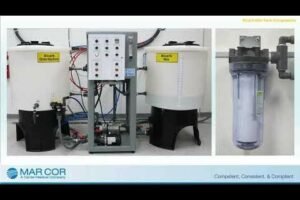Salesforce is a popular platform that gives you improved customer relationships with its cloud-based CRM. Thanks to the presence of Salesforce today, you no longer need to work with ERP software on your premise. The latter involves managing and owning internal servers with significant investments. Salesforce is an affordable alternative that is both SaaS and cloud-based, revolving around business needs.
When embracing Salesforce in your organization, you will get a software development cycle that empowers the business. Every project requires an accurate level of change management that ensures that all changes are communicated effectively to the software implementation teams. In addition, it needs to be configured and built correctly so that it gets the proper authentication and tests to deliver the advantages to the end customer.
The above process of effective change management can be resolved when you place the methodology of DevOps in practice in your organization. It blends the efforts of IT operations and software development. Its primary goal is to reduce the software development life cycle or the SDLC while offering features, bug and issue fixes, and updates needed to meet the business’s objectives.
Best Practices for DevOps in Salesforce
If you are a business owner of an enterprise and wish to expedite deeper into the software application development cycle, conventional methods today are not competent enough for standing out. This is where DevOps provides companies with a more agile and effective way of building and later executing apps that give you security, performance, and quality. In addition, it helps the business to automate the entire software development process, promote an improved collaboration between the operations and the software development team.
Development is an integral part of DevOps and is not adequate to reap advantages unless backed by deploying the Salesforce practices. Flosum is a Salesforce DevOps app with the tools to help you execute the best practices for your projects. So now, the question is, what are the best practices of Salesforce DevOps?
Experts specializing in Salesforce DevOps list these best practices below
Deploying version control –
When you apply DevOps to any Salesforce project, you should use a native version control that ultimately manages code files, other files, metadata, and documentation one hundred per cent. This will help you trace back every change and track issues that ensure you get a high level of security for your projects.
Implement automation –
Implementing automation in the deployment and testing stages frees the software development team to boost performance besides improving productivity. An utterly native solution for DevOps is built within the Salesforce ecosystem. This permits smooth integration, better security, and complete transparency of the process for release management that you will not find in the non-native apps for Salesforce.
Implementation of site reliability engineering and its best practices –
As an increased number of applications shift to being offered as a service for delivering an enhanced automated experience, implementing the best procedures for SRE becomes the need of the hour. This creates a state of resilience where the process can be automated wherever possible. The goal here is to approach the system from the perspective of humans, keeping the project’s final objective in mind so that unnecessary rework can be avoided. This helps reduce the overall costs by maximizing resources, increasing efficiency, and boosting the MTTR or the Mean Time To Repair.
Executing Build Acceptance Tests –
They are often called smoke tests and are conducted when the app’s deployment is complete. Automated testing is carried out in the continuous integration and deployment stage; however, this does not mean the build might not have logical errors. For example, this can happen if the application does not have sufficient coverage for codes. This is why experts in the field of Salesforce DevOps recommend smoke tests to be conducted even after the deployment of the application has been made.
Deployment on the pre-production server –
The pre-production server is an exact copy of the production org. It is a healthy practice for you to deploy the application in the above environment to detect and fix issues. This stops the possibility of bugs and errors at the last minute and ensures that when the software application is deployed on the production org., it is entirely free from mistakes.
Managing the source code and other components in the shared environment –
When developers work together in large numbers on a cloud-based platform like Salesforce, they get to see each other’s changes in the project.
This is where managing the source code is extremely important. The same holds for different components of the software application program like the user interface, the schema, the rights for access control, and the static features that go into the system for version control as the centralized source.
It is a healthy practice to store all of them on a system for version control. This helps the multiple developers work seamlessly without the fears of stepping on each other’s work and changes. The developer working on the project should make the change in an environment that is entirely separate.
Go beyond monitoring the performance of the software application –
As a business owner, you should not restrict yourself to just watching the account and the ability of the application. Instead, it would help if you went the extra mile to track the usages of the targeted audience and any change that looks abnormal to gather more profound insights into the app usage by the end-user.
Therefore, from the above, it is evident that as strategies for DevOps evolve, your business needs to keep up with the dynamic demands of the industry. This is where Flosum steps in to assist you seamlessly as it is a complete solution for Salesforce DevOps, offering you all the tools you need to stay in control from the first day.
It helps you to effectively meet the complex needs of the challenges of software development. Furthermore, it offers you the integration with tools that are high in quality as per industry standards. This ensures you get improved speed and volume for all your software development releases.















Add Comment